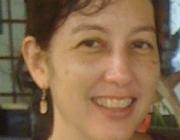Mangahas M.
Compradors and Fishers: Poverty, Community, and Market in the Periphery (Samal Island, Davao Gulf). Pilipinas. 2004;43 :1-31.
open accessAbstractThis paper explores the shared experience of poverty and life in the margins in fishing and copra-producing communities on the eastern side of Samal Island, Davao Gulf. Incorporating data from fieldwork experiences in 1996-97 and records of four fish compradors over 22 months, the paper describes the computation of income, prices and family budgets, and fisher generosity and community appropriation of fish on the shore to sketch the outlines of the moral economy. Analyzing the logic of demand-sharing and inter-dependency between domestic units, the paper follows the "social life" of fish that are important as food and are at the same time good as cash. This metaphor of fish being money is illuminated by a discussion of the credit relations with the compradors that also own sari-sari stores. Fish compradors also enable access to the market which is ruled by the system of "suki" or preferential exchange relationships. And as converters of value they mediate between community and the market, creating the boundaries between relations appropriate to each context.
Mangahas M.
Fishing and Performing Fair Shares. AghamTao. 2004;10 :51-80.
PSSC Knowledge ArchivesAbstractThe paper explores the meaning a a 'share' and 'sharing-out' as concepts (relatively underdiscussed in economic anthropology), and as themes particularly salient and central to Ivatan social life and economy. What are shares? The evolution of the mataw shares system in Mahatao exposes changing and conflicting principles for contemporary shares distribution. As practiced by matawfishers in Batanes today, formal sharepartners, close associates, and persons sent by chance all have a place in the economy of arayu, the matawfisher's product, which moves in spheres of exchange and sharing in which money does not have a similar value. The value of arayu (dried fillets of dorado) lies both in creating community and in participating in the market. The paper explores the cultural logic of arayu production and circulation and extracts a model of 'shares' where relations of hunting and gathering 'procurement' and of capitalist 'production' are linked.
 shares_article.pdf
shares_article.pdf Mangahas M.
Narratives of Power in the Landscapes of a New City. Banwa. 2004;1 (1) :37-74.
link to pdfAbstractIn the frontier zone of Southeastern Mindanao, the general sociological observation that social reality stands “in immediate relation to the distribution of power” proves to be a much more complex and dynamic state of being. This paper outlines several recurrent conversations about a particular island location in Southern Philippines. The sizeable island of Samal in the Davao Gulf is at its closest point only 15 minutes away from Davao City. It became the “Island Garden City of Samal” in 1998, but before that surprisingly few people in Davao City were even aware that there was an island called “Samal” nearby. Traveling around the island and conducting fieldwork in 1996-1997 I encountered many kinds of people and several recurrent conversations about Samal as a place. These local discourses tell of interregional migration and movement, and reflect active local engagement with the processes of “Bisayanization” and integration within the national mainstream, globalization, capitalism, and modernization in the Davao region. The paper situates each of the different kinds of claims on the landscape within the existing ethnographic, demographic, and historical picture for the region, and ends up describing a setting that is actually many different kinds of reality at the same time. Six narratives of the landscape are discussed: Samal Island as valuable real estate; as mythic place of “giants” and “ancestral domain”; as out-of-the-way and risky, where a visitor should watch out for “poisoning”; as recently settled frontier; as a promised and prophesied land; and, finally, as a landscape also inhabited by unseen beings that are “not like us,” widely feared to be exacting taxes in human life as large scale government and multinational-led infrastructural development proceeded in 1997. The paper examines each of these in turn, as they describe and address larger issues of identity, land and power.


